Recent Articles
Popular Makes
Body Types
10 Jeep Wrangler Competitors to Consider
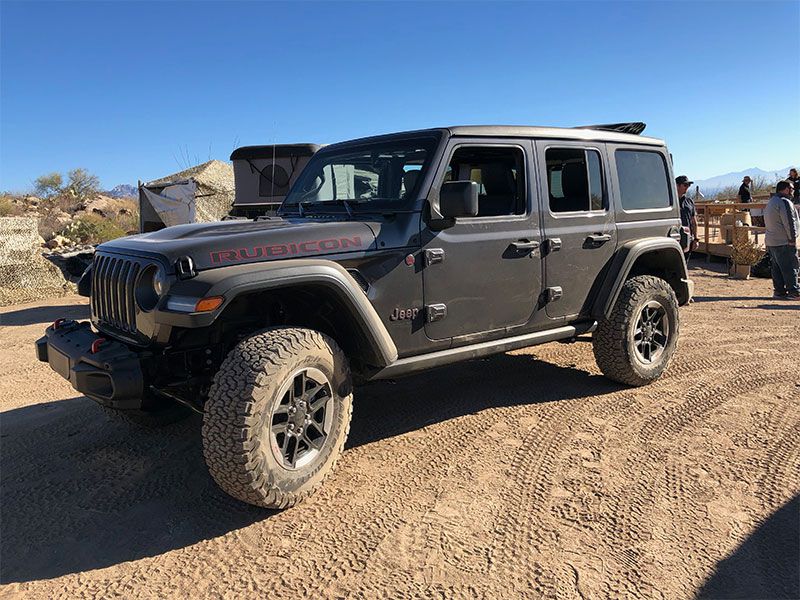
2018 Jeep Wrangler exterior front angle by Charlie Schiavone ・ Photo by Charlie Schiavone
If you’re in the market for a brand new soft-top 4x4 with extreme off-road capabilities, there is only one choice in 2018, as the Jeep Wrangler has no direct competition. While Jeep has battled many traditional body-on-frame competitors over the years, all have failed in their quest to dislodge the Wrangler (and its predecessors) from its perch as king of the hill.
The sands may shift when Ford finally reintroduces the Bronco, but until then, there’s one alternative to consider: you can either buy a Wrangler or roll the dice on a well-prepared classic 4x4. In the following pages, we’ll take a look at 10 alternatives to a brand-new Wrangler.
International Harvester Scout
The International Harvester Scout was one of the Jeep CJ’s most formidable competitors. Production began in 1961 and ended in 1980. Highly treasured by today’s 4x4 collectors, the original Scout is versatile, capable and unpretentious, with removable doors and a fold-down windshield. While there was no other competition at the time of the Scout's introduction, it jumpstarted the field. More than 530,000 Scouts rolled off the line over the years, with soft-top, hardtop, and pickup truck variants. International Harvester billed it as “a hardtop pickup … open-air roadster … off-road workhorse … all in one!”
Three primary models were produced: the Scout 80 (1960-1965), Scout 800 (1966-1971), and Scout II (1971-1980), each with a number of variants. Engine choices included V8s along with the more common inline fours and sixes. The Scout is a refreshingly bare-bones 4x4 and an excellent candidate for restoration projects.

Photo by Navistar/International
Ford Bronco
The Ford Bronco rolled through five generations between the years of 1966 and 1996, but only the first generation (1966 through 1977) was direct competition for the Jeep Wrangler. The Bronco more closely resembled the International Harvester Scout, however, with a spartan slab-sided design. The driver and passenger doors were symmetrical and nearly identical, while the frame and suspension were exclusive to the Bronco.
The lineup included a topless two-door, a two-door pickup, and a three-door wagon. Engine choices included a pair of inline sixes, along with the 289 and 302 cubic-inch V8s. Restored first-gen Broncos are extremely popular; well-restored vehicles fetch top dollar.
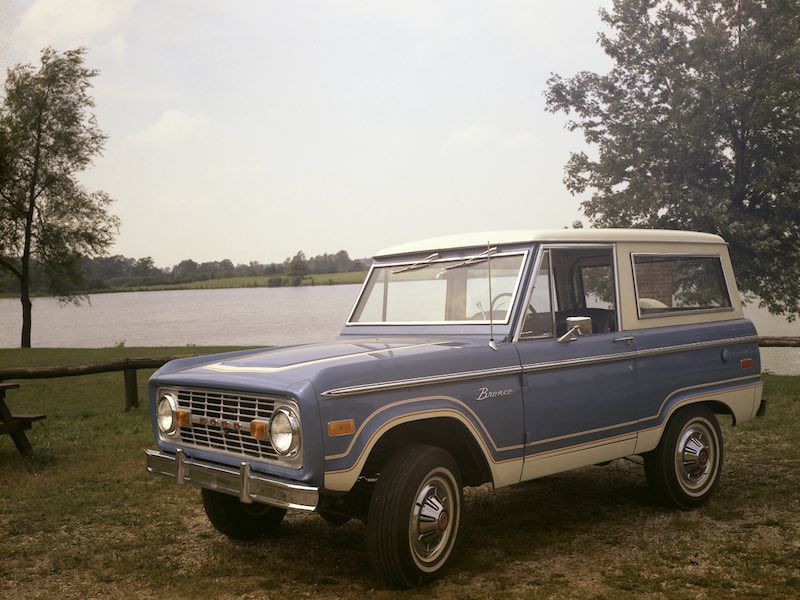
Photo by Ford Media
Chevrolet K5 Blazer
It took a few years for Chevrolet to get in the game following the Ford Bronco’s launch, but the K5 Blazer proved to be a worthy entry. The K5 Blazer rolled out for the 1969 model year on a shortened pickup truck frame, with a removable convertible top as a standard feature through the 1975 model year. While more massive than the Jeep Wrangler, the K5 Blazer competed more closely with the Ford Bronco as it grew in later generations.
Although the first-gen K5 Blazer and K5 GMC Jimmy (sold from 1969 through 1972) are undeniably cool, subsequent models were less distinctive. Original engine choices included a pair of inline sixes, along with 307 and 350 cubic-inch small block V8s. The 1969 K5 Blazer is quite rare, with fewer than 5,000 examples rolling off the production line.
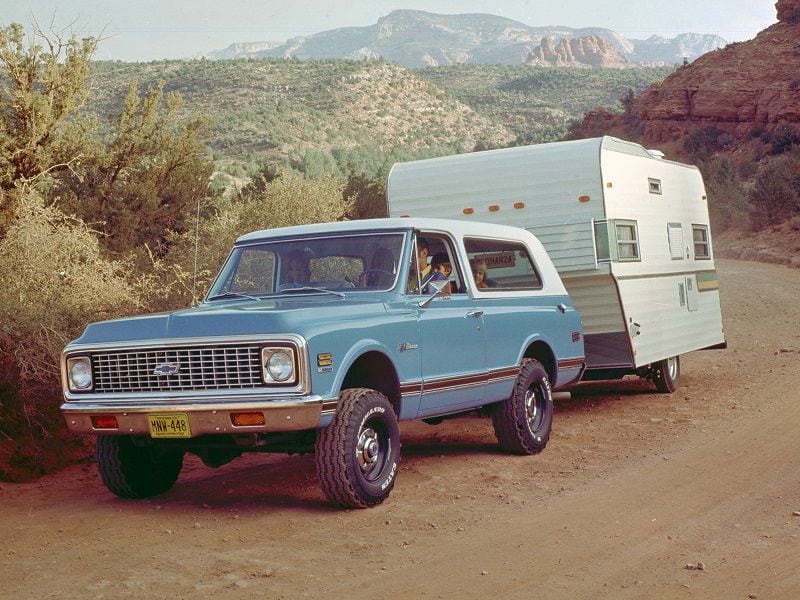
Photo by Chevrolet
Dodge Ramcharger
The first-generation Dodge Ramcharger competed with the Jeep Wrangler before Chrysler absorbed American Motors (AMC) in 1987. As a shortened topless pickup truck, 1974 through 1980 Ramchargers went head-to-head with the Ford Bronco, International Harvester Scout, and K5 Blazer.
Owners could choose either a soft fabric top or removable steel roof to ward off the elements. A 225 cubic-inch inline six was offered, along with a range of V8 engines topped off with the mighty 440, which was only available in 1974. The first-gen Ramcharger was a utilitarian truck, sold with just a driver’s seat as standard equipment. A front passenger seat and rear bench seat were optional. The second-generation Ramcharger was closer to a conventional SUV, with a welded metal roof.

Photo by FCA Media
Suzuki Samurai
The tiny Suzuki Samurai (sold overseas as the Jimny) was one of the hottest 4x4s in America for a brief period after it reached our shores. Although Jimny production began back in 1970, it wasn’t introduced here until the 1986 model year. The Samurai may have been small, but it provided a surprising level of competition for the Jeep Wrangler, coveted to this day for its off-road competency. A short wheelbase and real four-wheel drive (with low range) allow the Samurai to sneak into tight spots and crawl through treacherous terrain.
It was woefully underpowered, however, with a naturally-aspirated 1.3-liter four-cylinder engine that produced a mere 63 horsepower. An updated engine in the 1991 model year bumped output up to a whopping 66 hp. The suspension was revised in 1988.5 Samurai to address body roll issues, brought on by a notorious Consumer Reports article that crushed sales. 1995 marked the Samurai's last year in America. The Jimny remained in production overseas, with a full revision for the 2019 model year.
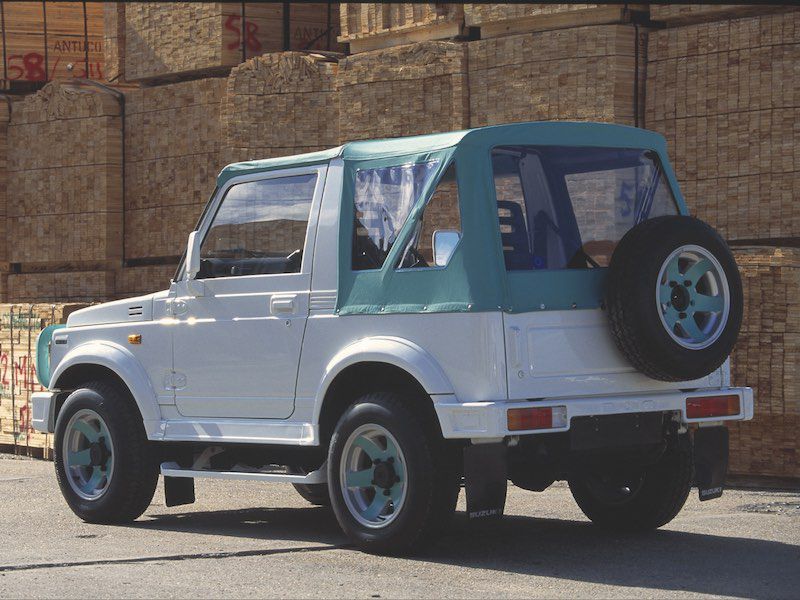
Photo by Suzuki Global Media
Daihatsu Rocky
The Suzuki Samurai’s early success prompted Daihatsu to import the Rocky 4x4 to America in the 1990 model year, along with the Charade sedan and hatchback. While never considered a serious competitor to the Jeep Wrangler, the Daihatsu Rocky did have one advantage over the Samurai: a larger and more powerful 1.6-liter inline four.
It was all for naught, as Daihatsu never built much of a dealer base and exited the American market in 1992, after a short run. Internationally, Rocky production ran from 1984 through 2002. The second-generation 1993 model introduced a rear coil spring suspension and a 2.2-liter inline four. While turbodiesel engines were available overseas, they never reached our shores.
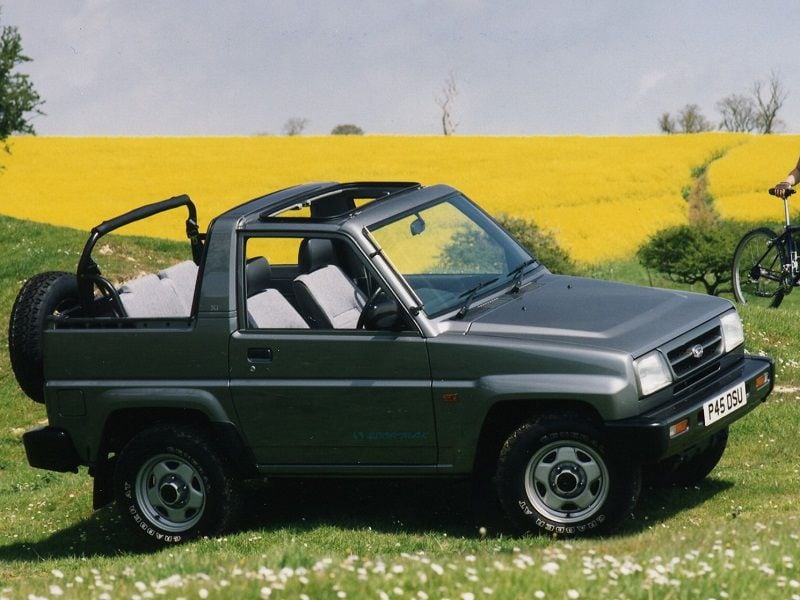
Isuzu Vehicross
The Isuzu VehiCROSS is one of the rarest competitors to the Jeep Wrangler and one of the most unique compact SUVs of all time. It was only imported into the United States between 1999 and 2001, with under 4,200 units sold. The Vehicross featured a 3.5-liter V6 engine mated to an advanced drivetrain that combined a computerized full-time all-wheel drive system for use on-road with a traditional four-wheel drive system for off-road use.
While the plastic exterior lower panel cladding was not well-received, the suspension system drew praise, with KYB monotube shock absorbers fitted with external heat-expansion chambers. The cabin could be decked out with Recaro bucket seats. The Vehicross was only available as a hardtop.

Photo by Wikimedia Commons
Toyota Land Cruiser 40
The original Toyota FJ Land Cruiser 40 (built from 1960 to 1984) is a formidable Jeep Wrangler competitor, sought after by today’s collectors. Toyota’s first serious compact SUV came in two-door and four-door configurations, along with a pickup truck variant.
The Land Cruiser 40 is a mighty little 4X4 with worldwide appeal. The lineup included three wheelbase versions, with the shortest being just a bit larger than the Wrangler. While a conventional inline six was standard here in America, the lineup included a range of diesel engines abroad. If you’re keen on the original FJ and have the cash to splash, the FJ Company markets fully restored and reconstructed FJ Land Cruisers, at a starting price of $120,000.
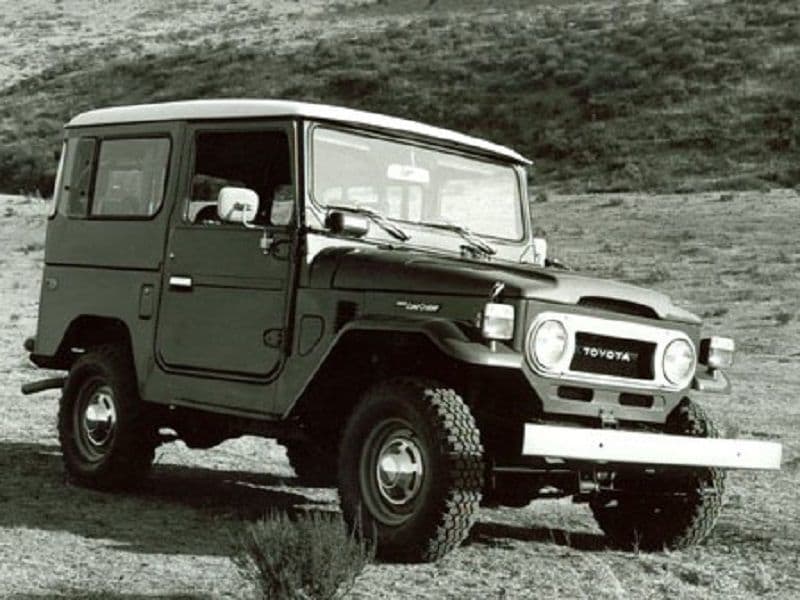
Photo by Toyota
Toyota FJ Cruiser
The retro-styled Toyota FJ Cruiser hardtop is a capable short-wheelbase off-roader and the only real competition for the Jeep Wrangler over the past decade. Sadly, the FJ had a relatively short production run in America (2006 through 2014), with sales that slumped after the first two years. Resale values remain high, however, due to scarcity and demand.
While the FJ’s 4.0-liter V6 engine is notoriously thirsty (with early models requiring premium fuel), it was one of a declining number of modern 4x4s offered with a standard six-speed manual transmission. Although many FJ’s suffer through shopping mall duty, this little 4X4 is intended for the trails, with a traction control system that provides the capability of a locking differential.

Photo by Toyota
Land Rover Defender
Although the Land Rover Defender is one of the most capable Jeep Wrangler alternatives, it's also one of the rarest and most pricey. The Defender went into production in 1983, but it wasn’t available in America until 10 years later. It was only offered through the 1997 model year. Limited availability ensures that well maintained and restored examples command a premium on the used market.
Early-model Defenders sported soft tops and structural roll cages. Later models could be equipped with removable roofs and conventional hardtops. While a 3.9-liter V8 engine paired with a manual transmission through 1996, the 1997 Defender featured a 4.0-liter V8 mated to a four-speed automatic.
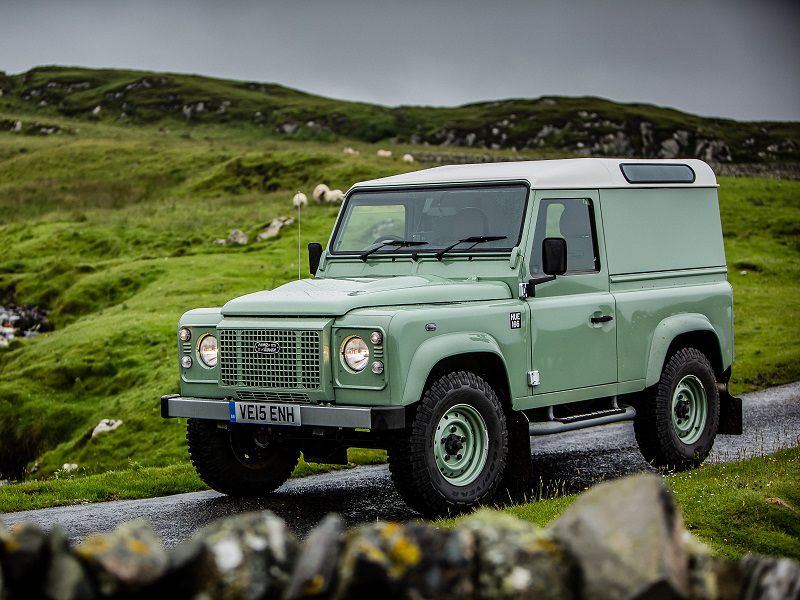
Photo by Land Rover